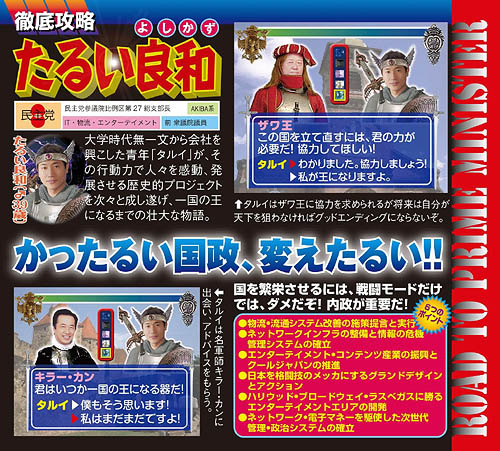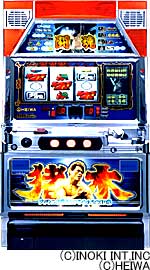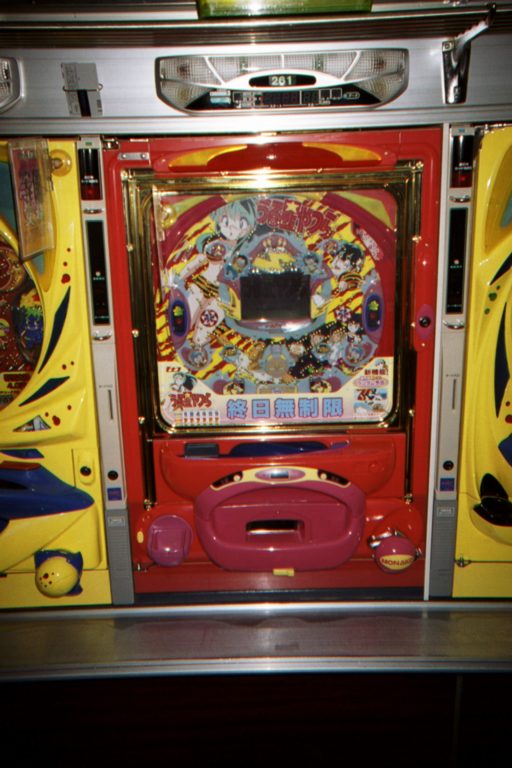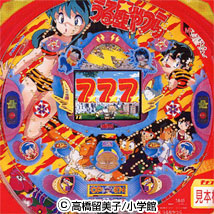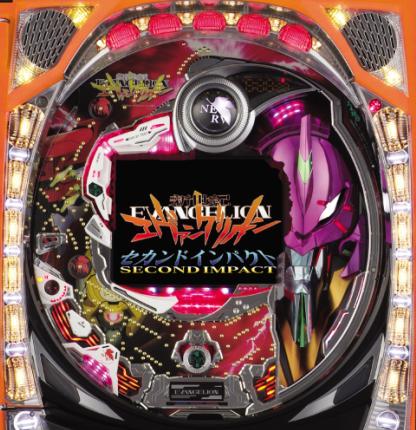 Asahi has a neat article with an unfortunately small, if tantalizing, photograph of an exhibit currently being held at the Marunouchi branch of Maruzen (I’m still bitter over you guys closing the Kyoto store!) in Tokyo until Monday, on the way that kimono designs of the pre-WW2 and wartime period reflected the political consciousness of the time. For example, in this photograph you can see a design reflected the tripartite alliance between Nazi Germany, Fascist Italy and Imperial Japan. Unfortunately, I’m nowhere near Tokyo so I’ve asked Adam if he could drop by and get some photos, or perhaps pick up whatever pamphlet or art book they have available because I would love to see more of these, and in some detail.
Asahi has a neat article with an unfortunately small, if tantalizing, photograph of an exhibit currently being held at the Marunouchi branch of Maruzen (I’m still bitter over you guys closing the Kyoto store!) in Tokyo until Monday, on the way that kimono designs of the pre-WW2 and wartime period reflected the political consciousness of the time. For example, in this photograph you can see a design reflected the tripartite alliance between Nazi Germany, Fascist Italy and Imperial Japan. Unfortunately, I’m nowhere near Tokyo so I’ve asked Adam if he could drop by and get some photos, or perhaps pick up whatever pamphlet or art book they have available because I would love to see more of these, and in some detail.
War-theme designs often mirrored current events. Inui found a kimono that depicted Adm. Heihachiro Togo, who was credited with Japan’s 1905 victory over the Russian fleet in the Sea of Japan.
She also found a design that spelled out the name of Yosuke Matsuoka–in romaji alphabet–then ambassador, when he pulled the Japanese delegation out of the League of Nations in Geneva in 1933.
Heartwarming stories and tear-jerkers also made it into kimono.
The story of the heroic Nikudan Sanyushi (Three human bullets), or Bakudan Sanyushi (Three human bombs)–three engineering corps soldiers who reportedly perished in a suicide bombing during the Shanghai incident in 1932–were given sweeping coverage by the media. Headlines and parts of the articles from The Asahi Shimbun and The Mainichi Shimbun became part of kimono designs.
This article immediately made me think of one I had seen on BBC news a couple of weeks ago, on a similarly unexpected yet unsurprising penetration of wartime propaganda into popular culture: British boardgames of the World War II era.

Take the early wartime game Battle of the River Plate, for example. Based on the first major confrontation between German and British naval forces, it is one of the earliest known games to reflect the international conflict. Players tried to score points by firing wooden sticks at the ship with a spring action. A direct hit caused the gun turrets on the ship to “explode”.
Another, Bomber Command, depicts bombing squadrons and invites players to bomb Berlin, at the centre of the playing board. Players take turns to throw dice to move toward the target. When materials were in short supply, the dice were replaced by a numbered spinning card.
“It was a game you can easily imagine people playing sitting in the air raid shelter while being bombed by the Luftwaffe during the Blitz,” says historian and author, Robert Opie.
The article then goes on to mention the way in which WW2 comic books incorporated anti-Nazi and anti-Japan motifs, a number of examples of which I posted some time ago. And of course, one can’t forget what you must agree is the best comic book cover of the war, if not all time. That is, unless you like Hitler-and you don’t like Hitler, do you?
What would be some good examples of popular culture reflecting enemies and conflicts in the world around us today? Off the top of my head, there’s naturally “24,” which I’ve never seen but I understand is about how Arab terrorists want to kill us. And then of course there’s the video game Mercenaries: Playground of Destruction, in which a disaffected North Korean general stages a military coup on the eve of reunification with the South in some near future year, or on a similar but slightly more afield topic, take the third season episode of the fairly recent Justice League Unlimited cartoon show, in which a number of DC superheroes travel to a fictitious militaristic Northeast Asian nation, clearly modeled after North Korea, to stop a rampaging nuclear powered robotic monster which they claim they had built “to protect us from the foreigners,” clearly modeled after North Korea’s metaphorically rampaging nuclear (non-robotic) monster.
All of these are in fact less examples of government sponsored propaganda than grass roots, genuinely popular culture expressing such things as a society’s popularly held fears and hatreds regarding their enemies at that time. I recall during the first Gulf War, when I was 10 or 11 years old, I saw someone at a flea-market selling “Desert Shield” branded condoms, which exclaimed on the package something along the lines of “Don’t you wish Saddam Hussein’s father had worn one of these?” Perhaps it is due to the fact that I was out of the country during the early stages of the recent Iraq invasion, but I can think of no examples of similarly popular expressions of support for the current war. Is it wrong of me to think that the initial support for the invasion was, however high the level, generally a grudging and ambivalent sort of support, lacking the level of enthusiasm needed to generate items along the lines of the pro-Axis kimono, the Hitler-face dartboard, or the “Desert Shield” condom?

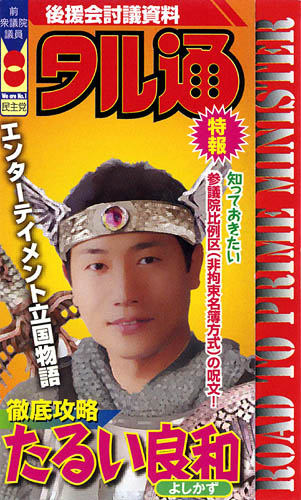 Open Tarui’s
Open Tarui’s 